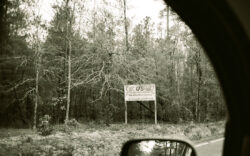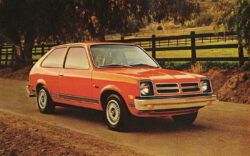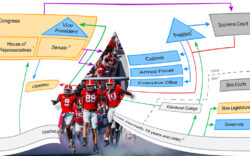Across the River is a love letter to “The People, Places and Culture of East Athens” from two women who grew up there: Maxine Easom and Patsy Arnold. They both made careers in the local school system and have maintained their strong ties to East Athens all their lives. Neither is a historian, but they know Athens across the North Oconee intimately, and they wanted its story told. They finally acknowledged that they’d have to be the ones to tell it.
East Athens, aka East of Athens, truly has been largely ignored by all us historians who have meticulously recounted the march of our city westward up the hill from Daniel Easley’s mill to the university campus, downtown and onward toward Cobbham, Five Points and the stately homes that have made Athens the Classic City of renown.
Come to find out, the labor that established the fortunes that allowed the grandeur was centered in East Athens—slaves picking cotton right there across the river, and, pretty quickly, mills to spin the cotton into cloth, run by wage slaves, but at least it was an enlightened system that provided everything the white mill worker could need, though not the black. The mills furnished steady wages for the whole family, children included, and also affordable housing, credit at the company store, schools and churches. The system was built on the expectation that mill work would become a family affair through the generations, and it did. The former slaves were excluded from that network, other than to care for the millworkers’ children.
The authors write from their own backgrounds of coming to realize that their home area was looked down on by the rest of the town. “So, in reality, we can conclude that the lack of esteem with which east side citizens are viewed is a result of all of the ideas discussed: close association with those who work with their hands, geographic association with mill villages and citizens, lack of upward mobility due to economic challenges, limited employment opportunities at the University, lower educational levels, and racial and socioeconomic boundaries that are difficult to break. These issues existed in the 1800s and, in many ways, continue to exist in 2018.”
Easom and Arnold assembled this book with the love and defensiveness most of us feel for our neighborhoods when they’re not as cool as the other side of town or the other side of the Mason-Dixon Line. And what they are writing about is a big, sprawling neighborhood with smaller enclaves within it. Everybody had to work hard and rely on each other for mutual support, and they knew each other through their schools and churches and neighborhood groceries run by people who knew them and knew their daddies.
What we have here is an account of that large area, mostly across the river, where the newly freed slaves from the surrounding counties congregated to escape the plantations and where, because of the water power of the river, cotton mills and the housing they built drew the white workers. Initially, the river was the city limit, so East Athens wasn’t even a part of the city, and even after it was included and became the First Ward, the part of town across the river was indeed a second-class city, without lights or water or indoor plumbing or paved streets. In short, many parts of East Athens were slums up until the late 1960s, connected to downtown by an old one-way iron bridge. East Athens was finally brought to the city’s attention by the federal Model Cities program, with its money for infrastructure and its insistence on citizen participation in the decisions on how that money was to be spent.
Having established these negatives, Easom and Arnold then introduce us to all the people and institutions that made a strong community out of the material they were given. Under the authors’ curation, East Athens springs into focus as a vibrant melange of men, women and children busy working to make not just a living but a life. And you know them by their names, because they and their offspring have gone on to contribute to every area of Athens business, government and culture.
This book, all 600 pages, is chock full of riveting photographs, biographies and first-person reminiscences that introduce us to the rest of the story. It’s like attending a reunion only to discover a colorful branch of the family we didn’t know we had. And of course East Athens is undergoing yet another transformation, as people continue to cross the river looking for affordable housing, and the Firefly Trail invites us to stroll and bike through this former terra incognita. So, Across the River has come along just in time to show us what we’ve been missing, and it makes a fine gift for anybody interested in knowing more about our town.
Like what you just read? Support Flagpole by making a donation today. Every dollar you give helps fund our ongoing mission to provide Athens with quality, independent journalism.










